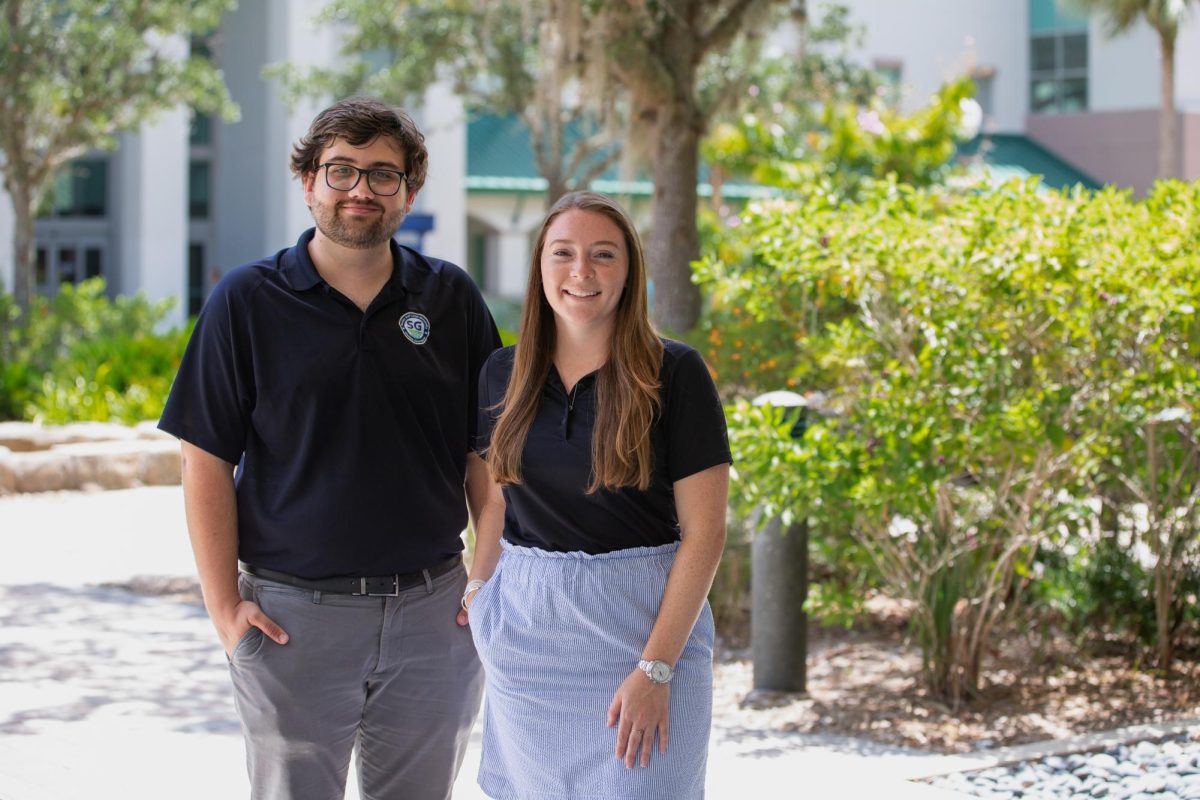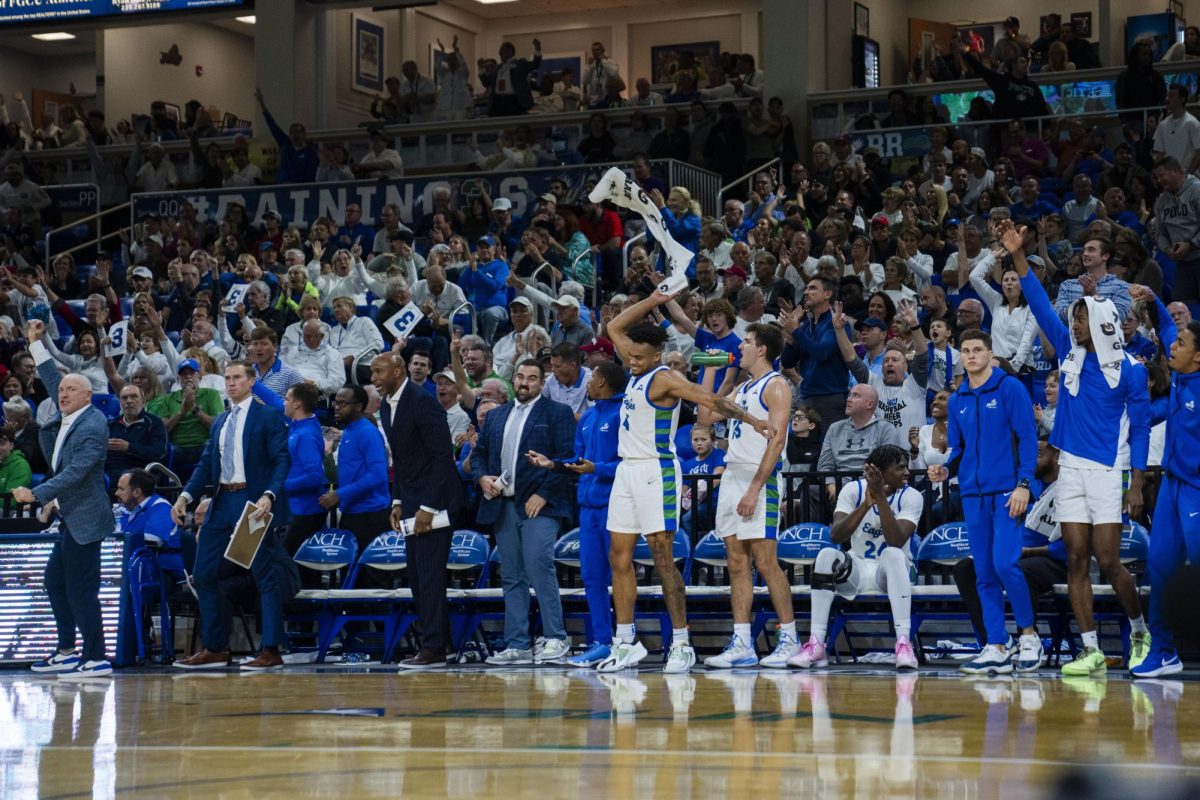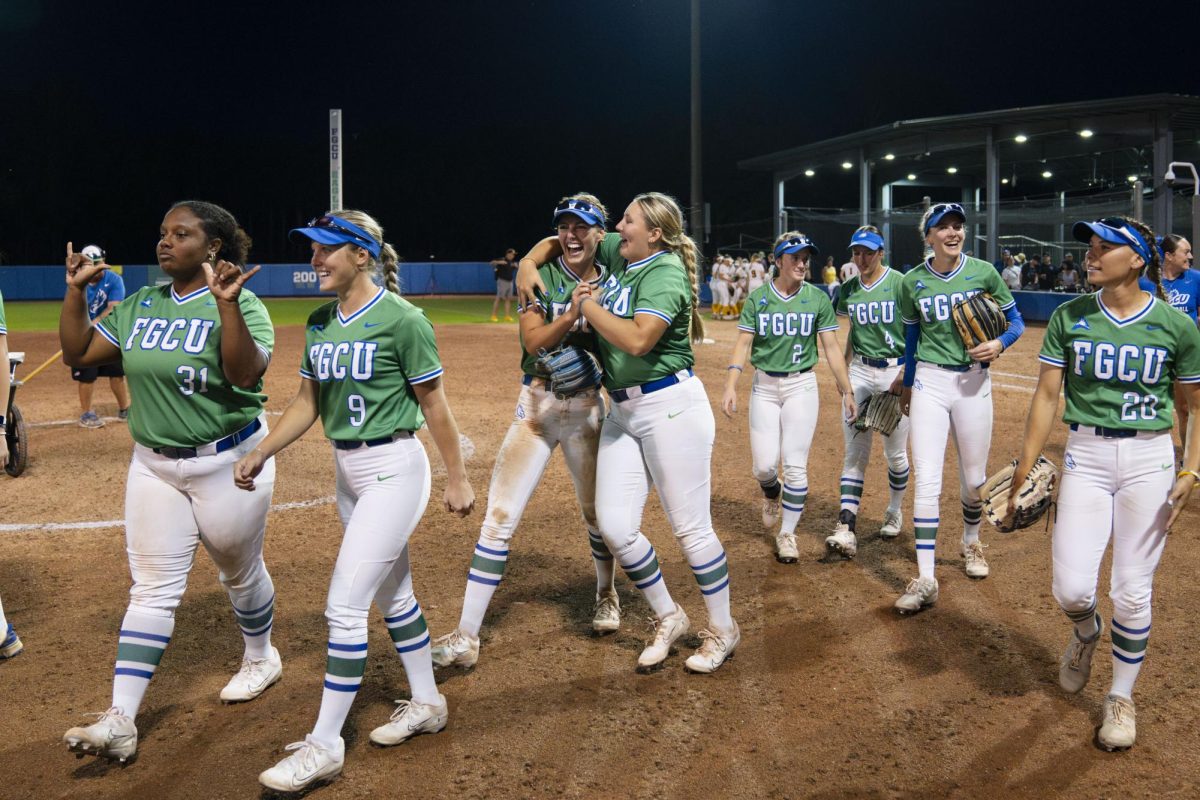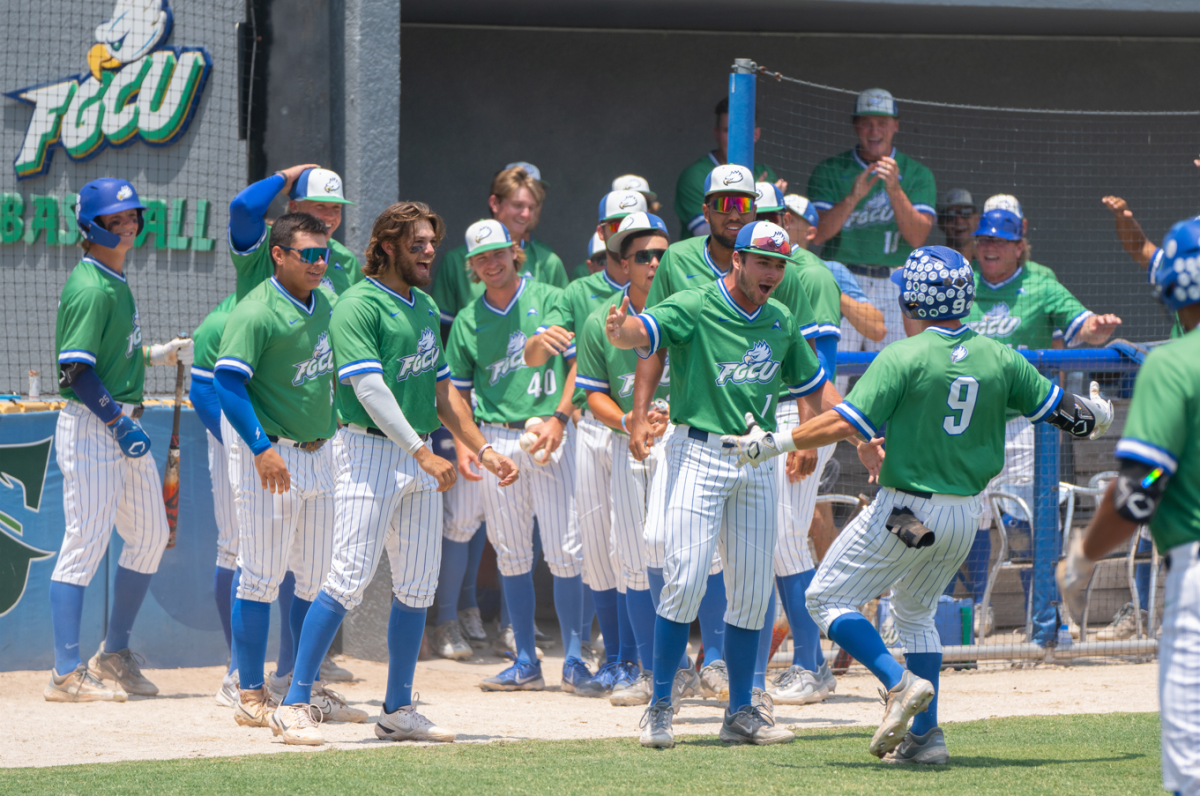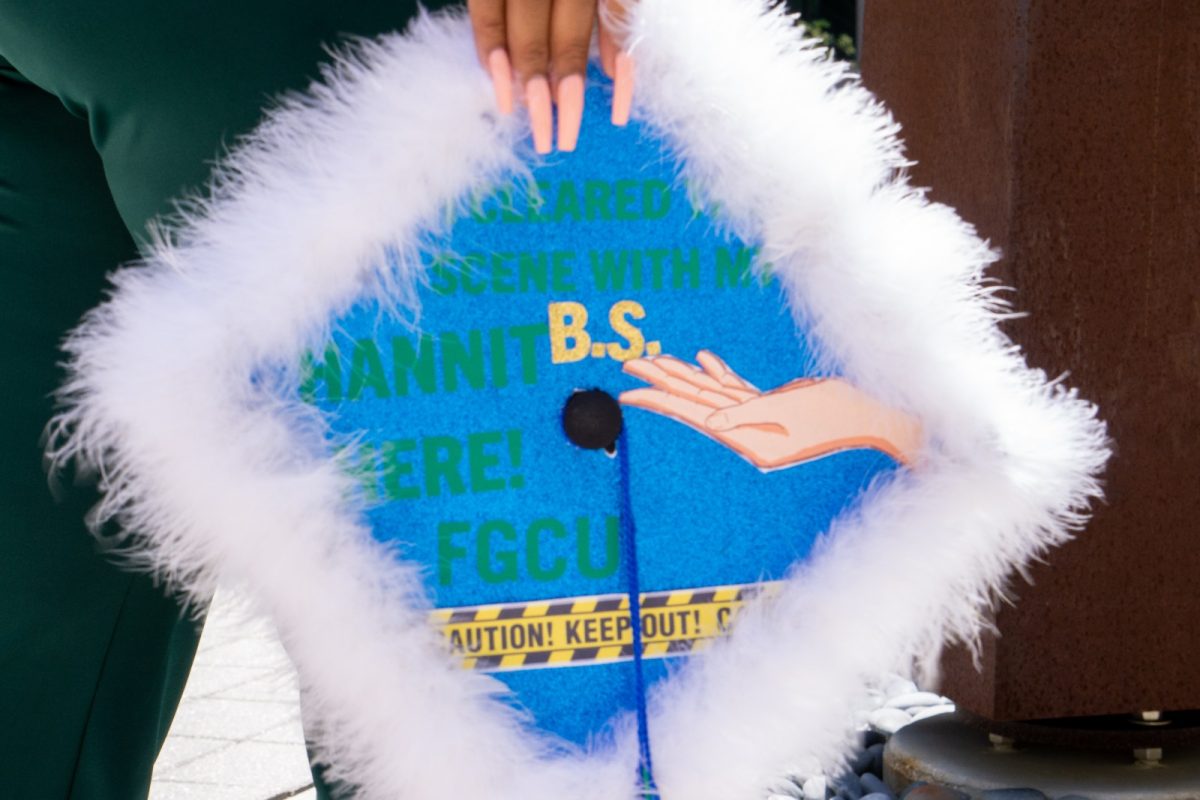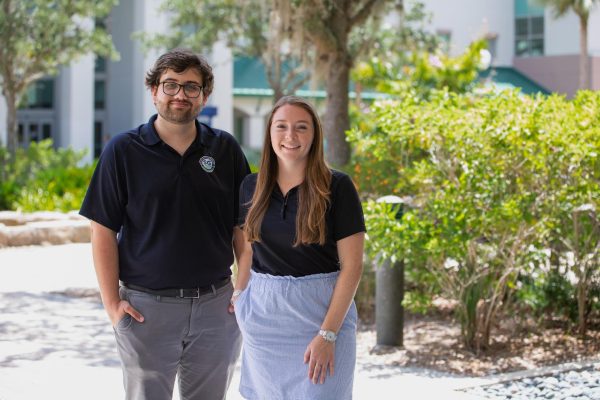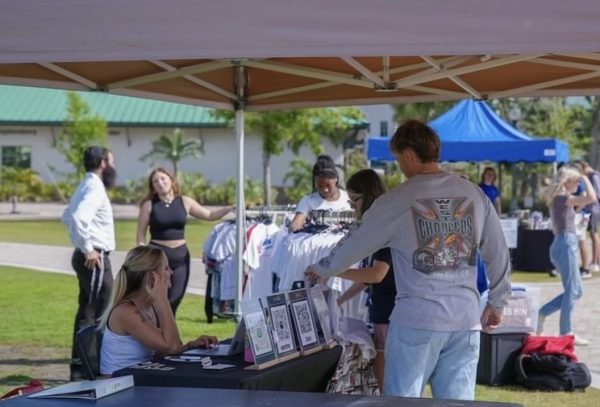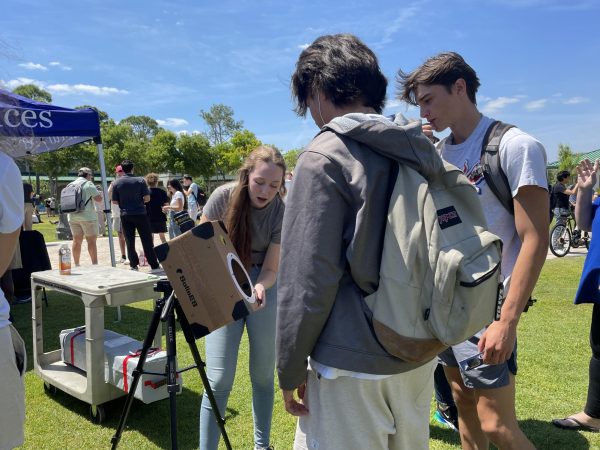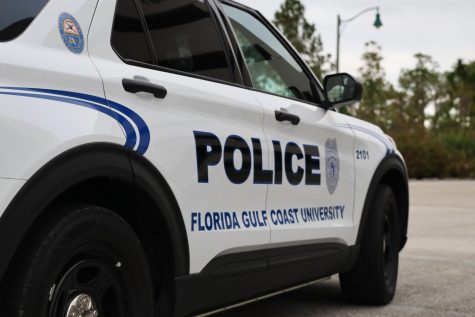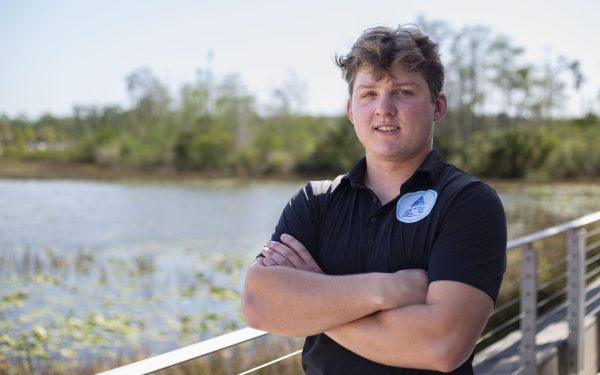Every Name Shares a Story – A Deeper Dive into the History Behind FGCU’s Named Spaces
June 8, 2023
Griffin. Seidler. Marieb. Holmes. To students at FGCU, these names, among several others, are nothing but plaques on buildings they pass by or sit in for classes, but these names hold a greater meaning. They are lives.
What started as a 760-acre spread of land and a vision 25 years ago, has now flourished into a university campus consisting of over 200 buildings facilitated by growth-fostering relationships.
The FGCU Foundation is responsible for raising awareness of the need for private funding. The foundation is also responsible for inviting, funneling, and managing charitable gifts to the university through annual programs and campaigns.
As Vice President for University Advancement and Executive Director of the FGCU Foundation, Katherine “Kitty” Green serves as the primary figure in acquiring financial support and ensuring that FGCU’s priorities are met in the process.
“Aside from educating students, FGCU is already doing so much to benefit the community and I think there are so many more opportunities. It is really exciting to be able to work with donors who are excited about those possibilities too…It is a fun position to be that matchmaker,” Green said.
According to Green, at the highest level there are two ways people can have their name tied to a campus building. Both are a direct result of their extraordinary work in advancing the university.
The first is an honorary naming by the Board of Trustees, typically for individuals whose political action or achievements have further advanced FGCU.
One of the most notable examples of this is Howard Hall. The building was named for William Thomas “Tommy” Howard, a Fort Myers native, who played an instrumental role in approving and establishing FGCU. Howard graduated from Fort Myers High School, receiving his diploma from Thomas A. Edison. Then, for ten years, he lobbied the Board of Regents, relentlessly advocating for the delivery of higher education to Southwest Florida. In 1991, the state finally announced the creation of FGCU as Florida’s 10th four-year institution.
Griffin Hall was the first building to receive a name on FGCU’s campus. Shortly after the plans for FGCU were announced, the Board of Regents selected a 760-acre portion of land donated by Ben Hill Griffin III for campus construction. Academic Building 1 was named in appreciation of Griffin’s generous philanthropy, setting the foundation for FGCU.
The Bradshaw Library is another example of a dedicatory naming on campus. Dr. Wilson G. Bradshaw, better known as “Brad,” served as the university’s third president from 2007 to 2017. President Mike Martin suggested to the Board of Trustees that it would be appropriate to name the library in gratitude for his beneficence to FGCU during his decade in office.
The other route for arranging named spaces on campus is to honor those who have advanced FGCU through significant philanthropic donations.
Both Whitaker and Holmes Hall were named for Burtt and Ruth Holmes, trustees of the Whitaker Foundation at FGCU. The couple initiated a relationship with the university before the construction process even began. When the state announced the plans for FGCU, the Holmes were eager to get involved.
“The interesting part is that we actually approached the university. They didn’t approach us since there was no university,” Burtt Holmes said. “It was when Roy McTarnaghan (FGCU’s first president) was still in a little office up on Tamiami Trail (US 41) and was just in the planning stages of its development.”
Because of the Holmes’ educational and career backgrounds, they were interested to see what the strategic goals were for FGCU, and more specifically if engineering was included. McTarnaghan told them that it was on the long-term agenda, but because of its expense, they could not afford it yet. They asked McTarnaghan if there was a plan to integrate STEM programs and he responded, “We don’t even have a building for those yet.”
The Holmes’ offered to help with the process by donating $5 million that was matched by the state to fund the construction of Whitaker Hall (Ruth’s maiden name). The building houses FGCU’s math, science, and technology degrees. They then established the Whitaker Eminent Scholar position to lead and coordinate the growth of those programs on campus.
In the Fall of 2005, FGCU introduced its engineering program. Ten years later, Holmes Hall was unveiled as the new center for bioengineering, civil engineering, environmental engineering, and computer science on campus.
“We have stayed in touch with the administration to keep us well informed and we appreciate the tremendous strides that FGCU has taken. It has been a remarkable ride to see what the university has accomplished in just a few years,” Burtt Holmes said. “It’s been gratifying to even play a small part in the benefits of FGCU’s growth.”
On the other hand, the facility for FGCU’s College of Arts and Sciences, Academic Building 7 already existed, but was renamed Seidler Hall in January 2016 to acknowledge the Seidler family’s commitment and investment to the university.
Lee and Gene Seidler became acquainted with FGCU through the Bower School of Music and the Arts while semi-commuting to Florida, spending several weekends on Sanibel.
Although Lee graduated from Columbia University and taught as a professor at New York University, his wife Gene spent 14 years teaching with the Lee County school district. They felt that their impact would reach more people directly through a local philanthropic focus.
After spending a substantial amount of time in the Art Gallery and fostering relationships with FGCU Art Gallery Director John Loscuito and Former President Bradshaw, contributing to the art program “felt like the obvious choice,” according to Lee Seidler.
“An interesting point of FGCU is that you have all these buildings with names of individuals on them who didn’t attend FGCU. Looking at most universities, the buildings were built or named after alumni. We don’t have many wealthy alumni,” Lee Seidler said.
The Seidler Family pledged a gift to establish the Seidler Fund, which provides scholarship, internship, and mentoring opportunities for students through the College of Arts & Sciences.
“One of the problems we saw was that Florida had a governor who was against the study of liberal arts and only wanted to fund STEM programs. That left no room for philosophy, psychology, or related areas,” Lee Seidler said. “I’m a liberal arts graduate and so is my wife. This contribution was kind of our way of saying that there is plenty of money and people to support the liberal arts.”
“A true university offers something for everyone,” Gene Seidler said.
Sometimes having names tied to a campus building means a combination of both deed and financial-based contributions.
The naming of Marieb Hall is to remind FGCU and Southwest Florida community members of Dr. Elaine Nicpon Marieb’s legacy. She was a prolific author of anatomy and physiology textbooks, who strived for the betterment of FGCU by serving as an advisor after connecting with the dean of the College of Health and Human Services.

Because her relationship with the university developed so profoundly over time, Dr. Marieb committed $15 million to FGCU between 2012 and 2017. Her financial generosity and steadfast involvement with the advisory board were essential for the establishment of Marieb Hall and the Marieb College of Health and Human Services.
“First it was the relationship, and she was helping to grow the college itself. Then the money followed,” Green said.
FGCU recently celebrated the grand opening of the Water School, in November 2022. Both the Department of Ecology and Environmental Studies and the Department of Marine and Earth Sciences are housed within the 4-story, 116,00-square-foot facility, making it the largest building on campus.
According to Green, the university is still in search of a donor’s name to tie to the Water School.
“It is definitely something we would like to see sooner rather than later,” Green said.
While it is important to recognize how the financial contributions have funded the foundation of FGCU’s success thus far, each building on campus shares a story far richer than any number could ever tell.
“Because we are so new and young, one of the things that makes FGCU so special is that people still have the opportunity to influence the university and really be part of its growth,” Green said. “It isn’t a transaction, it is a relationship. The name on the building is just our way of thanking and honoring what they have done for the university and our students.”


